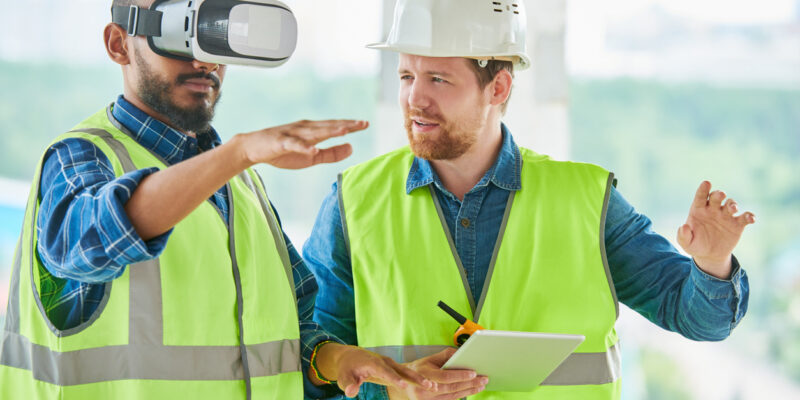When most people think of virtual reality, they think of big, bulky headsets and video games, yet virtual reality (VR) is fast becoming a useful new tool for many in construction, and we can expect to see it used more and more throughout the industry.
Expand the Vision
One of the many pros of virtual reality is its ability to be used throughout all of the phases of construction. Often, the first step of a project is finding stakeholders to invest in your vision, and VR can be a key tool in helping investors truly “see” a final product. Virtual reality changes presentations by allowing stakeholders to truly understand the vision of the designers and architects, and allowing walkthroughs that would previously be limited to only models, drawings, or words.
Save Time
We all know time is money, and virtual reality dramatically shortens the time required to get through the design process. Instead of creating 3D models based on existing structures, architects and other designers can create changes digitally and build from cloud based models. They no longer have to visit the build site, where it can often take weeks to make the necessary changes to get the necessary level of detail. With virtual reality, the model is interactive, meaning designers can “walk through” the space and “see” the details in life-size proportions. If they don’t like something, revisions can be done quickly and with no required visits to the site.
Cut Costs
Similarly, VR saves job sites money through reducing material costs. With digital models, crews are able to better estimate the materials needed for a job before they buy them. In some instances, site managers can review calculations digitally, instead of sending out operators and heavy equipment to take measurements. Crews can also use virtual reality to identify potential weaknesses in the structure before the building begins, keeping both labor and supply costs down. This is not only great for keeping costs down, but is also more sustainable as less product is wasted. Because they are able to see potential obstacles, crews can adapt in real time, allowing jobs to stick more closely to the desired timeline. As the cost of building materials continues to skyrocket and the labor shortage remains, this type of planning and coordination is becoming essential to projects all across the country.
Improve Safety
Besides reducing labor costs, virtual reality also keeps workers safe. Instead of walking employees through safety training that doesn’t offer realistic scenarios, you can use in-depth VR simulations that carry no risk of physical danger to the workers. Staff can interact with the exact equipment and features of their workplace and see how a situation would play out. Plus, VR is more engaging than a boring training talk, so workers end up with a lasting, visual memory.
Steadfast prides itself on efficiency and sustainability, and we hope to see more technologies like virtual reality throughout the industry. Tools like VR improve workflow, keep workers safe, and save both builders and their clients money!

